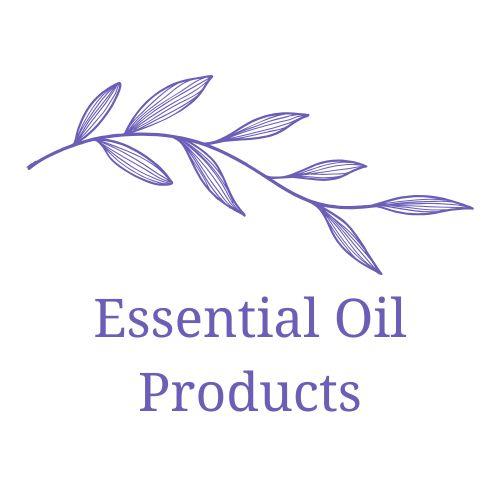Your cart is currently empty!
Understanding Essential Oils: A Comprehensive Guide
Understanding Essential Oils: A Comprehensive Guide
Essential oils have found their way into countless households, becoming staples in natural wellness, beauty products, and aromatherapy practices. However, the depth of this fascinating world often goes unexplored. In this guide, we’ll delve into what essential oils are, their origins, how they are extracted, their various applications, safety guidelines, and tips for sourcing high-quality oils.
What Are Essential Oils?
Essential oils are concentrated plant extracts that capture the natural aroma and beneficial properties of the plants they originate from. These oils are obtained from various parts of plants including flowers, leaves, stems, roots, and even bark. Their chemical composition gives each essential oil unique scents and therapeutic properties, making them popular for a range of uses.
Origins of Essential Oils
The use of essential oils dates back thousands of years to ancient civilizations such as the Egyptians, Chinese, and Greeks, who recognized their therapeutic benefits and often used them in religious rituals, embalming, and beauty care. The extraction and use of these oils were intimately tied to practices of healing and spirituality. Today, essential oils continue to be celebrated globally for their multifaceted applications.
Methods of Extraction
Extracting essential oils is an art form that requires careful attention to detail. Here are the most common methods used:
- Steam Distillation: This is the most widely used method. Steam is passed through plant materials, causing the essential oils to evaporate. The vapor is then cooled, condensing back into liquid form.
- Cold Press Extraction: Usually reserved for citrus oils, this method involves mechanically pressing the rind of the fruit to extract the oils.
- Solvent Extraction: This technique uses solvents to dissolve essential oils out of the plant material. It is often used for delicate flowers that would be damaged by steam distillation.
- CO2 Extraction: A more modern method, this involves using carbon dioxide at high pressure to extract essential oils, preserving their chemical structure and properties.
Benefits of Essential Oils
Essential oils are revered not only for their delightful fragrances but also for their various health benefits. Here are some of the key benefits associated with commonly used essential oils:
- Lavender: Known for its calming properties, lavender oil is often used to reduce anxiety and improve sleep.
- Peppermint: This oil can help improve focus and relieve headaches due to its invigorating scent.
- Eucalyptus: Frequently used in respiratory blends, eucalyptus oil may assist in relieving cold symptoms and clearing airways.
- Tea Tree: Renowned for its antiseptic properties, tea tree oil is effective in treating minor cuts, insect bites, and acne.
Aromatherapy Uses
Aromatherapy is one of the most recognized applications of essential oils. It involves the therapeutic use of these oils, predominantly through inhalation or topical application. Common practices include:
- Diffusing: Using a diffuser disperses essential oils into the air, providing aromatherapy benefits as you breathe in.
- Massage: When diluted in carrier oils, essential oils can be applied during massage to enhance relaxation and relieve muscle tension.
- Bathing: Adding essential oils to bathwater can create an aromatherapeutic experience that promotes relaxation and rejuvenation.
Essential Oil Safety
While essential oils can provide numerous benefits, safety should always be a priority. Here are some important guidelines to follow when using essential oils:
- Always dilute: Essential oils are highly concentrated and should be diluted in a carrier oil before topical application to minimize the risk of skin irritation.
- Patch test: Conduct a patch test on a small area of skin before full application to check for allergic reactions.
- Consult professionals: If you’re pregnant, nursing, or have underlying health conditions, consult a healthcare professional before using essential oils.
- Store properly: Essential oils should be stored in a cool, dark place away from direct sunlight to preserve their integrity.
Application Methods
Understanding the best application methods enhances the effectiveness of essential oils. Here are some popular ways:
- Topical application: Essential oils can be directly applied to the skin (post-dilution), allowing for targeted therapy.
- Inhalation: Inhaling essential oils directly from the bottle or via a diffuser promotes quick absorption into the bloodstream.
- Internal consumption: Some oils, deemed safe for internal use, can be ingested. However, this should be done under professional guidance to ensure safety.
Sourcing High-Quality Oils
The quality of essential oils varies widely, which can impact their efficacy. Here are tips for sourcing high-quality oils:
- Check for purity: Look for oils that are labeled as pure or 100% essential oil, without fillers or synthetic additives.
- Research brands: Choose reputable companies that provide information on their sourcing and testing practices.
- Read reviews: Customer feedback can provide insights into the effectiveness and quality of specific oils.
Dosage Guidelines
Understanding dosage is crucial in maximizing benefits while minimizing risks. Here are general dosage guidelines:
- Topical use: Typically, 1-3 drops can be mixed with a carrier oil for application.
- Diffusion: 3-5 drops of essential oil are commonly recommended per 100 ml of water in a diffuser for effective aroma.
- Inhalation: Direct inhalation from the bottle can involve 1-2 drops gently inhaled, but caution is key.
Understanding essential oils opens a world of natural wellness opportunities. By exploring their origins, extraction methods, applications, and safety guidelines, anyone can find ways to enrich their life with these potent plant extracts. As you embark on your journey with essential oils, remember to respect the power of nature’s essence, using these oils mindfully and sustainably for both yourself and the environment.

Leave a Reply